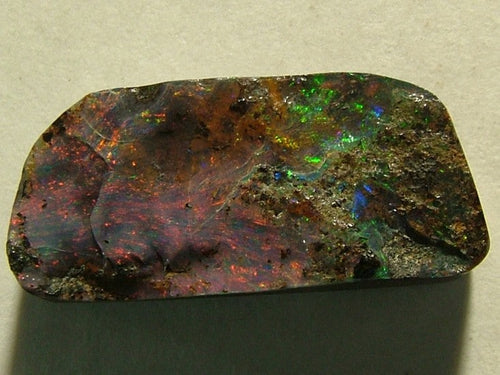If I asked you what the difference between white and black opal is, there is a chance your answer would be something like:
Well the main difference must be that black Opal is black and white Opal is white, right?
Well actually nothing could be further from the truth. Don't worry though you would not be the only one who would make the assumption that black Opal is entirely black and white Opal is entirely white.
The colour actually refers to the body tone and not the colour of the Opal. The following Opal body tone chart gives you some idea of how the body tones can differ in the Opal world.

The body tone dramatically impacts how the Opal looks and is one of the factors in determining an Opals worth. So what exactly is the difference between white and black Opal?
Black Opal, like a dark storm brewing
While holding and being astounded at the beauty of a piece of black Opal, one thing you will notice is its rich dark hue.
This hue is where is gets it's name from and it is this darkness that makes the colours pop out of the stone and give it such an impressive look. Generally the deeper & richer colours a black Opal has the more valuable and more sort after it becomes.
White Opal, a milky explosion of colours

White opal, also known as milk or milky Opals, is on the opposite end of the spectrum to the black opal. Referencing the above body tone chart, it falls between N7 to N9.
While they can still have all the same colours as black Opal the milky tone makes the colours harder to see. This lack of vibrancy along with white Opals being more readily available means you can pick them up quite a bit cheaper then black Opals.
Before you dismiss white Opals all together, it is worth remembering that while the quality of white Opals can vary greatly, a white opal of very good quality will have nearly as many tones and colours as the black.
You may like:

















